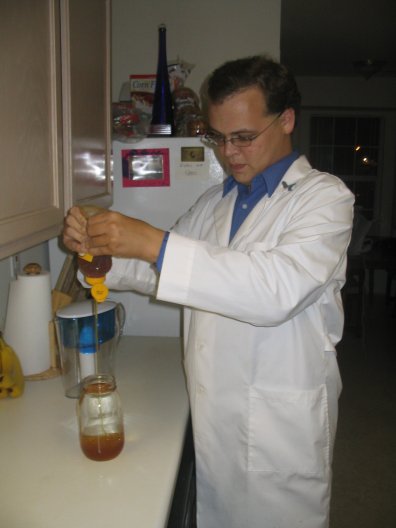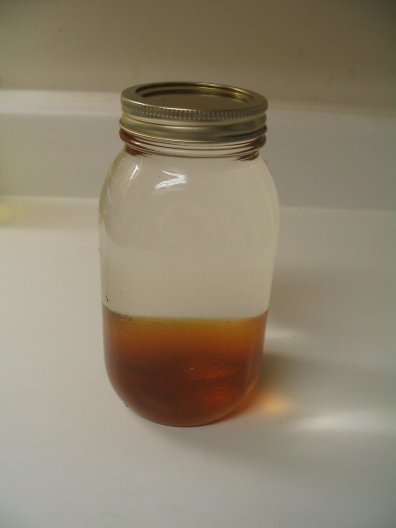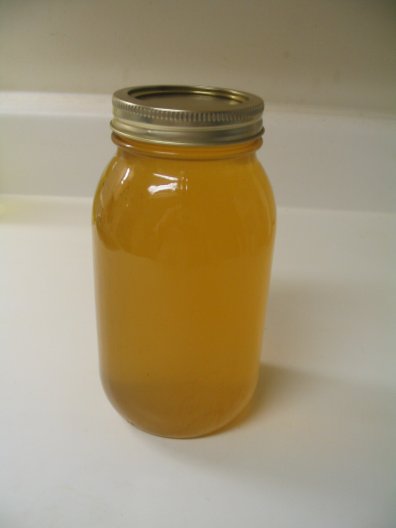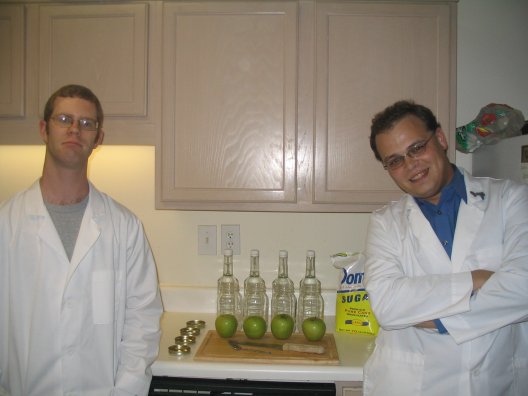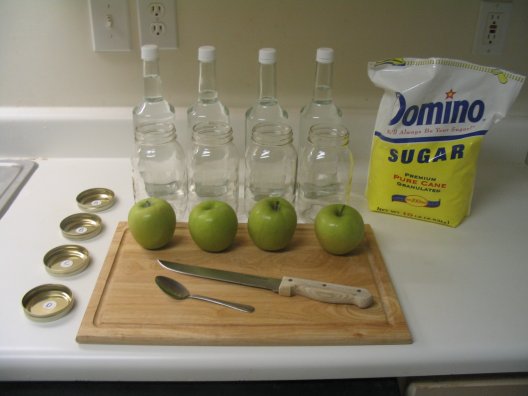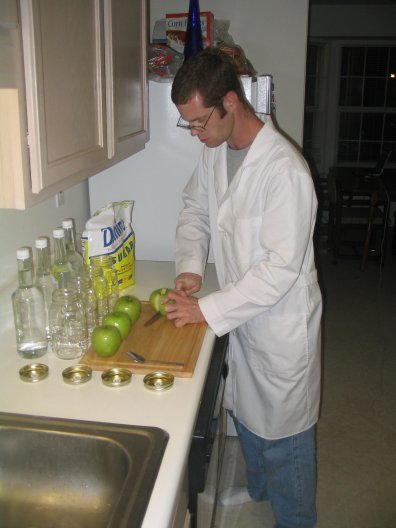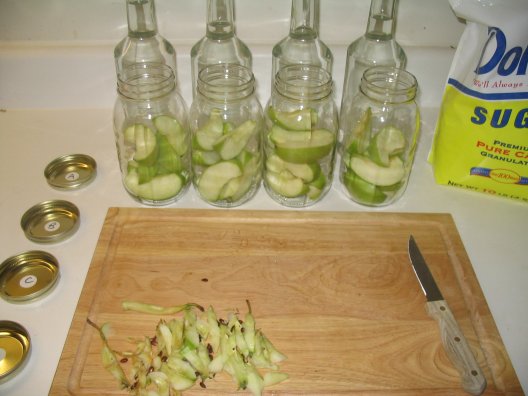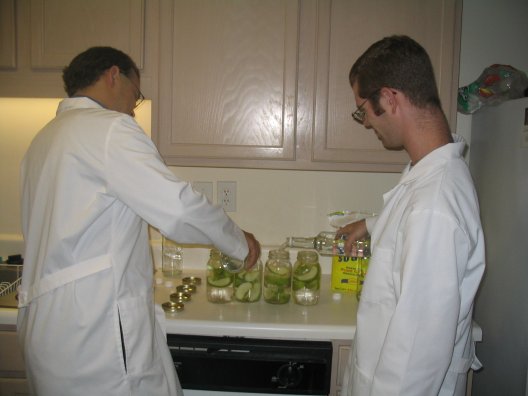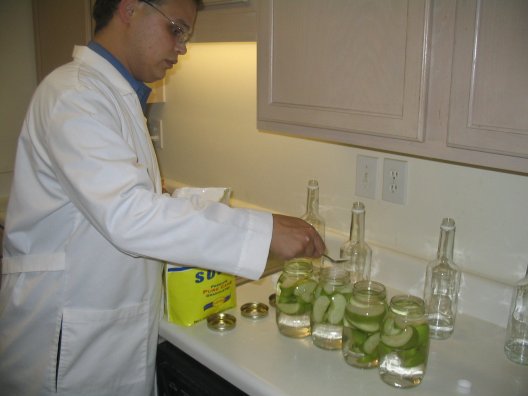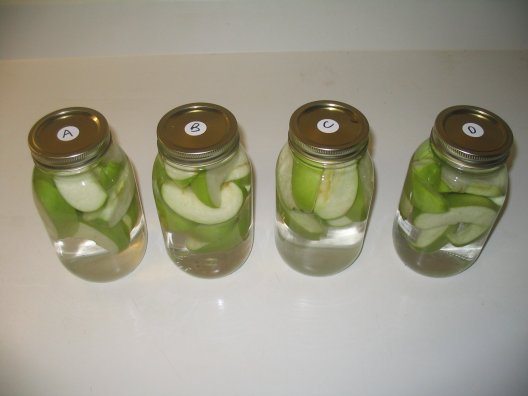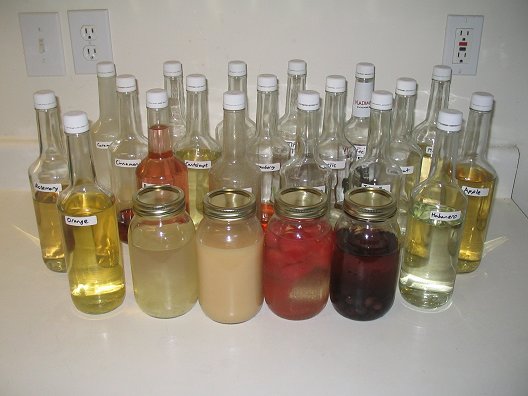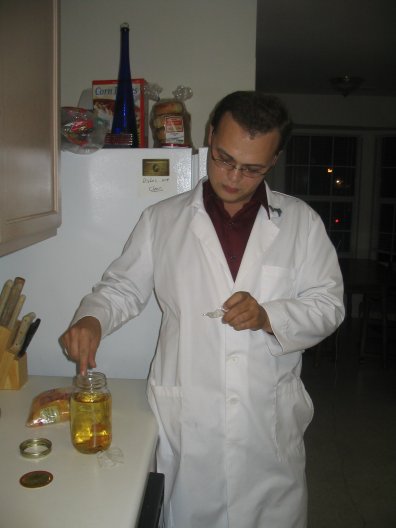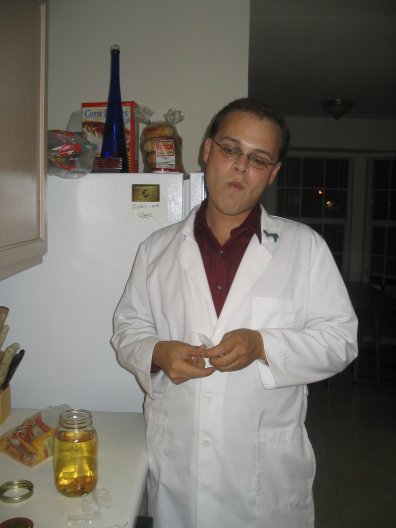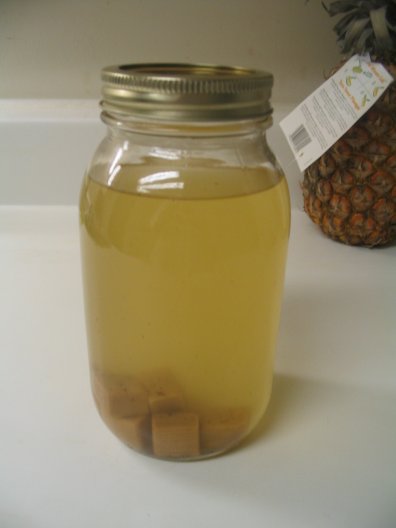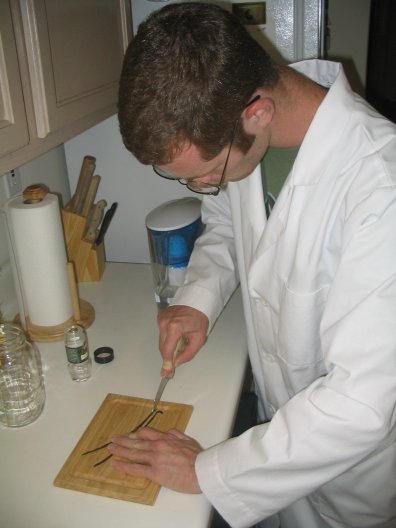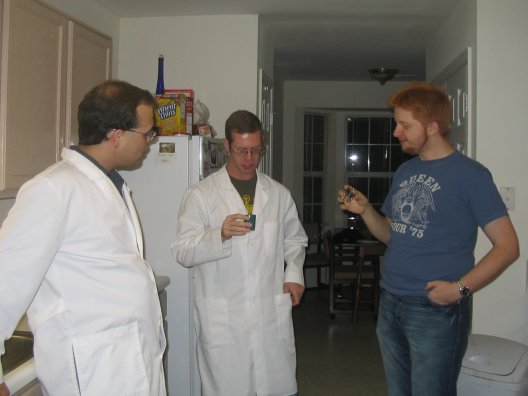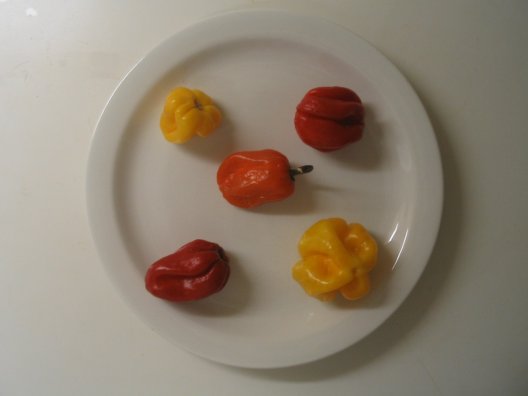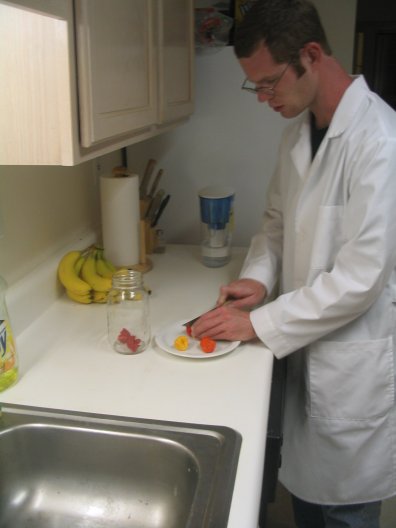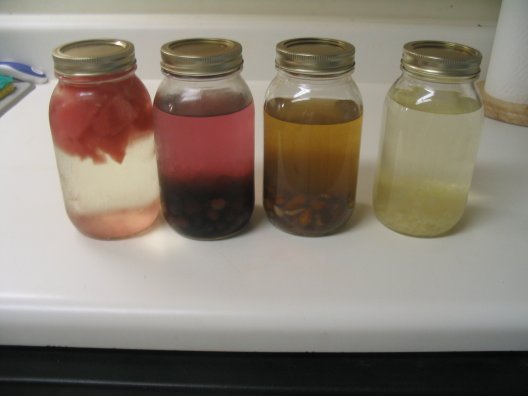As of last week, we had four vodka infusion experiments ongoing at once, not counting the Big Experiment (which brought us to eight bottles, total). We recently tasted those four, and are proud to declare three of them successfully complete.
Before we go into that, however, a note on the Big Experiment. When we made our initial post, I wrote one batch of apple vodka would have the apple wedges replaced every three days, with a spoonful of sugar added with each replacement. A couple of readers expressed concern that the subsequent spoonfuls of sugar would add an unwanted variable to the experiment, since the corresponding batch whose apples will not be replaced will receive no extra sugar. We realized that they were right; there really is no reason to add more sugar to that batch of vodka. We have now replaced the apples in the appropriate vodkae twice now, and only added the initial spoonfuls of sugar.
Now, on to the tastings. In this session, we sampled the blueberry, watermelon, ginger, and vanilla-caramel vodka infusions.
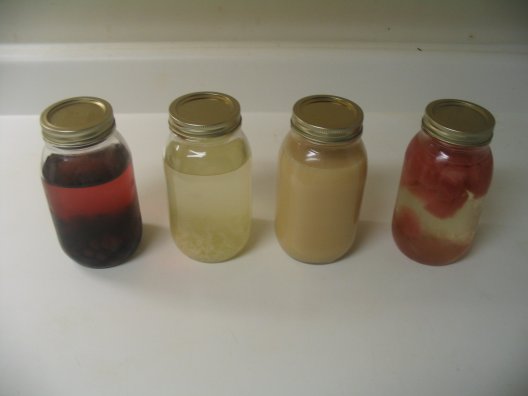
We have begun to document our initial reactions more thoroughly than we used to, so for the sake of clarity, I am going to change how these posts are formatted. Each of our written reactions (sometimes paraphrased) will be labeled separately. We tend to take turns taking the first shot, so the order of our reactions may alternate. (Our opinions used to be commonly labeled by our reaction photos, but I've been relying on those photos much less lately, because they're pretty repetitive.)
The
blueberry vodka looked about the same as it did last time; at this point, it had been infusing for 50 days, yet another record-crusher after the recent 39-day almond experiment. Though, to be fair, this was in part due to the fact that we skipped a week in our tastings.
Brendan's reaction: "It has very much a blueberry taste, but with a heavy sourness around the edges. Fortunately, the sourness fades quickly. It could be better, but the taste is strong enough and close enough to call it done."
Wayland's reaction: "I realized as we poured the shots that until now, my experience with blueberries has been limited to faux-blueberries in frozen goods, so I can't judge how close the vodka's flavor is to the real thing. This shot starts off very smooth, with a nice flavor. It's a little rough on the back end; not a vodka burn, and not a fruity flavor, just a little off. Thankfully, the sensation doesn't linger."
We decided that the blueberry vodka was a success, despite its shortcomings, and bottled it.
The
watermelon vodka had infused for 31 days as of this tasting. The flavor, though still not very strong, has intensified since the last tasting.
Wayland's reaction: "I think it's done. I don't know if we'll ever get a specific 'watermelon' flavor out of it, though it definitely has a general melon flavor. It's very smooth; it almost reminds me of Midori on a certain level, though this doesn't have the same twang."
Brendan's reaction: "The flavor is, like a watermelon fruit, light and sweet. It also has a tinge of sour, but it isn't enough to bother the overall taste. I don't think the flavor is strong enough to hold its own in a cocktail, though that remains to be seen. It is tasty on its own, though, and I don't think the flavor is going to get any stronger."
The
ginger vodka clocked in at 22 days as of the tasting, much closer to the lifespan our research stated it would take. At the
previous tasting, you might recall, the infusion was only four days running.
Brendan's reaction: "The flavor is much stronger than last time. In fact, the taste is now stronger than the spice, to the point where the spice is almost hard to detect; though it certainly still exists. It's nice, but I think a little more time will make it even better."
Wayland's reaction: "It definitely has more flavor than last time. It's interesting; like the blueberry, though, I'm not sure how much exposure to ginger I've really had, other than ginger ale and gingerbread. The vodka has both a touch of spice and a touch of sweetness to it. I like it as it is, though I'll defer judgement to my fellow scientician on whether it needs more time."
We're giving the ginger vodka another week and re-sampling. This is the only experiment we sampled that wasn't ready for bottling.
Our final tasting of the night was our
vanilla-caramel vodka. It was a foregone conclusion that this one would be ready within a day or two after
stage two, since there were no ingredients remaining to remove; we only needed to wait for the caramel cubes to dissolve. Whether the two flavors would marry successfully, however, was up for debate.
After taking his shot, a big grin crept across Wayland's face. "This is excellent. Other than a bit of overpowering vanilla aftertaste, I cannot complain about this vodka. It's smooth, creamy and sweet. Most of our cocktails require some sort of lower proof mixer to make them palatable, but I think this vodka could easily hold that position without lowering the proof of the drink. It's just that smooth."
Brendan's reaction: "I think we got the perfect balance here. The vanilla and caramel flavors are both distinctive, yet they support each other in a very pleasant way. There's not much of a front end/back end interplay, it's just the two flavors all at once, which subside to leave a slight vodka flavor behind, but no burn whatsoever."
The vanilla-caramel vodka was declared a rousing success, possibly one of our best yet.
As for the blog formatting, I feel like this post was a little formulaic; I'll keep tweaking things a bit, in hope of preserving clarity without sacrificing entertainment value. Feedback is always appreciated; here at Infusions of Grandeur, nothing is shielded from peer review.
